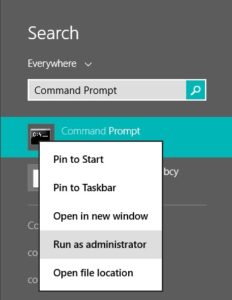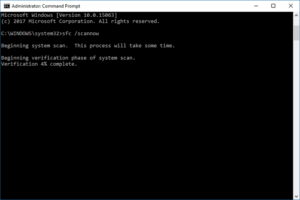This post is for anyone who finds themselves fighting off a computer virus on Windows 8.1 or Windows 10. The one I just encountered was called “Win32 Apanas Trojan” by Avast Free Antivirus. I’m not an expert in the sketchy world of antivirus software, but Avast seemed to help me out a lot.
All three of my computers run Windows 8.1. Call me crazy. I don’t like Windows 10. (I miss Windows 7, but Windows 8.1 is my middle ground). Maybe 10 is better against viruses? Maybe that’s a pipe dream.
I was caught with my guard down the other day, when a virus suddenly stopped me from using my main computer. Many of my programs stopped working, and my computer began behaving quite badly — not doing what I asked and running mysterious console applications on its own. I immediately went down the list of recovery options:
- Windows System Restore. It has saved me before, it could save me again! Nope, not in this case. For whatever reason, there was no way I could restore my system like in the good old days.I later found out that I could have restored it, but Windows 8.1’s “Metro” Recovery interface had me convinced I could not. Come on, Microsoft! Lesson learned. Use Control Panel -> All Control Panel Items -> Recovery to find the real System Restore.
- Start Over. Yes, I try to stay prepared for this kind of apocalypse. I was ready to format my hard drive and start over… But why not try a few things first?
- Manual Recovery Through Research. This seems to have worked, in my case. No issues for a full day, and all is back to normal. More details below.
 How I Recovered My Computer: Manually
How I Recovered My Computer: Manually
Four simple steps got my computer running again. I was lucky that the virus didn’t stop my computer in its tracks by the time I ran System File Checker:
Go to Search or Start > Command Prompt and right-click. In the popup menu, click “Run As Administrator”
Step 1: System File Checker
 In the command prompt window, type this command:
In the command prompt window, type this command:
sfc /scannow
The “sfc” stands for System File Checker, and it’s a lifesaver. It runs through a thorough list of Windows system files, checking for missing and changed files, then restoring their originals. Mine completed with some warnings about certain files being skipped, or something along those lines. It still helped. Some viruses may block or replace this executable, but I was spared.
Step 2: Install Avast and/or ClamWin
Avast Antivirus is free for 30 days. ClamWin is open source and free to use. Use one, use both, just use something!
Step 3: Reinstall Infected Programs
This is why we keep backups of everything, right? If an executable (program) gets infected by a virus, you need to reinstall that program.
Summary
Some people never a trust a computer that’s been infected, and insist on formatting their hard drives. I’m more optimistic. If you can survive through a virus with the steps above, then congratulations! I hope this helps someone!